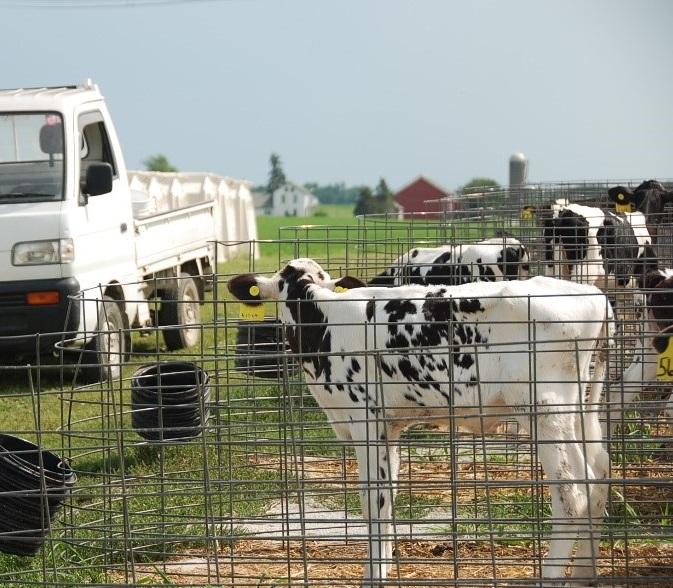Dairy Calves Need Water In Addition to their Milk and Starter
Dairy Calves Need Water In Addition to their Milk and Starter
By 3 days of age, baby calves should be provided water free-choice in addition to their calf starter and milk or reconstituted milk replacer. Depending on the environmental temperatures and calf health, young calves may drink a quart or more of water daily. As temperatures increase, calves will drink more water. Water intake also increases as calves eat more starter. Generally, calves drink 4 parts water to every part of calf starter consumed. Calves drink water more frequently than cows, thus the need to have water available at all times. In the winter, calves will drink more water when provided warm versus cold.
Why Provide Water to Baby Calves?
Providing free-choice water is not only needed for hydration, but also and more importantly, for rumen development. Providing water free-choice increases starter intake and weight gain. In a research study, depriving calves of drinking water decreased starter intake by 31% and decreased weight gain by 38% over those calves provided water free-choice. Remember that weight gain, especially related to muscle and skeletal growth, during the first 2 months of life is positively correlated to first-lactation milk yield. Calves fed water free-choice also had a lower incidence of scours.
Free-choice water along with a high-quality calf starter results in rumen development, which allows the calf to transition to a diet containing primarily forages and other fibrous feedstuffs. When calves are fed milk, milk does not enter the rumen but rather the calf’s true stomach or abomasum. When calves nurse or drink milk, a nervous stimulation results in the closure of the esophageal groove that allows milk to go directly from the esophagus into the abomasum, bypassing the rumen itself. Thus, milk or water added to the milk will not enter the rumen and provide a moist environment for the bacteria to grow in the rumen. These rumen bacteria produce volatile fatty acids (VFA’s) that result in the development of the rumen papillae, which, in turn, absorb the VFA’s that provide nutrition to ruminants.
Ways to Provide Water:
Calf hutches or individual stalls - Ideally, calves should be provided water away from buckets containing calf starter. When starter and water are located side-by-side, calves often drip water into the starter, thus increasing the chances of wet feed that can mold. Also, by providing water at the front of the hutch, labor efficiency can be improved since the person replenishing water can walk in a straight line versus weaving through the hutches (see pictures).

Automatic calf feeders - For calves fed through an automatic calf feeder, automatic waters are provided in each pen of calves. These waterers should be selected and installed such that the top is no higher than 28 inches from the floor and provide water that is at least 3 inches deep. Access to these waterers should be unobstructed to allow unlimited access to water. Just like waterers for the milking herd, they should be emptied daily and cleaned and scrubbed with a brush using a weak bleach water (1/4 cup bleach in 1.25 gal water) at least weekly.

Take-home message
Baby calves need water free-choice for optimum and cost-effective growth.
Author: Donna M. Amaral-Phillips
